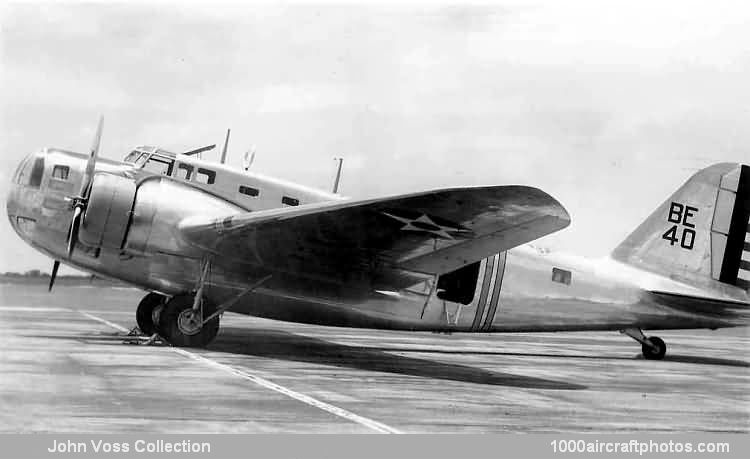01/01/2011. Remarks by Jack McKillop: "This aircraft was used by one of the three squadron commanding officers assigned to the 5th Bombardment Group [redesignated 5th Bombardment Group (Medium) on 6 December 1939], 18th Wing, Hawaiian Department, US Army and based at Hickam Field.
The markings on this aircraft are consistent with those mandated by the General Headquarters Air Force (GHQAF) in January 1938. GHQAF had been activated on 1 March 1935 to have administrative and operational control of all USAAC tactical units in the continental US The 18th Wing in the Territory of Hawaii was not assigned to GHQAF but they also adopted these markings.
Technical Order (T.O.) 07-1-1 dated 5 January 1938 mandated that each GHQAF aircraft have (1) Squadron Recognition Colors, (2) an Airplane Designator and (3), when appropriate, Command Recognition Stripes. These were:
1. Squadron Recognition Colors: Each attack, bombardment or pursuit squadron in a group was assigned a unique color which was applied to 'a suitable depth of the front portion of the engine nacelle(s).' If there were three squadrons assigned to the group, the colors were red, white and yellow; blue would be used if there was a fourth squadron. Group headquarters and headquarters squadrons had the cowling(s) divided into three or four equal segments, depending on whether there were three or four squadrons assigned. If three squadrons were assigned, the cowling would be divided into three equal segments and the segments were painted red, white and yellow. If four squadrons were assigned, four equal segments would be painted blue, red, white and yellow. Wing commanders would assign colors to reconnaissance squadrons while no colors were applied to headquarters squadrons of wings, air bases and GHQAF.
2. Airplane Designators: Each aircraft had a designator consisting of one or two alpha characters and a number; all aircraft except those assigned to reconnaissance squadrons had two letters. The designator was applied to the vertical fin and the top and bottom of the left wing. The designator would indicate whether the aircraft was assigned to Headquarters GHQAF, a wing, an attack bombardment or pursuit group or an air base or reconnaissance squadron. The first letter indicated the type of unit the aircraft was assigned to and the second letter indicated the number of the unit (1 to 26 being represented by the corresponding letter of the alphabet). This was followed by the unit number of the airplane. It was common in three squadron units to reserve the numbers 1 to 9 for the headquarters squadron with the three squadrons being assigned number blocks of 10 to 39, 40 to 69 and 70-99. Normally, the squadron commanding officer would use the aircraft with the lowest or highest number in the block.
3. Command Recognition Stripes: Command aircraft were identified by 5-inch (12,7 centimeter) stripe(s) painted in the squadron colors encircling the fuselage aft of the cockpit. Two stripes encircling the fuselage at right angles to the axis of the plane indicated a squadron commander; a single stripe at right angles to the axis of the plane indicated the A Flight leader; one stripe at a 45° angle from the horizontal with the uppermost part inclined toward the front of the aircraft indicated the B Flight leader; and one stripe at a 45° angle from the horizontal with the uppermost part inclined toward the rear of the aircraft indicated the C Flight leader.
The photo above is marked according to the technical order. The engine cowling is painted red and the two stripes aft of the door, indicating a squadron commander's aircraft, are also painted red. The Airplane Designator is BE 40, the B indicating the aircraft was assigned to a bombardment group and the letter E is the fifth letter of the alphabet indicating that this was the 5th Bombardment Group. The numeric '40' indicated that this plane was assigned to the second squadron of the group.
The Aircraft Designators in this system only accommodated 26 groups because there are only 26 letters in the alphabet. As conditions in Europe deteriorated in the late 1930s followed by war in September 1939, the USAAC began expanding and plans were soon developed to have 41 groups. The existing Aircraft Designator system could not accommodate that number so a new system was developed and (T.O.) 07-1-1 dated 15 May 1940 was issued."
